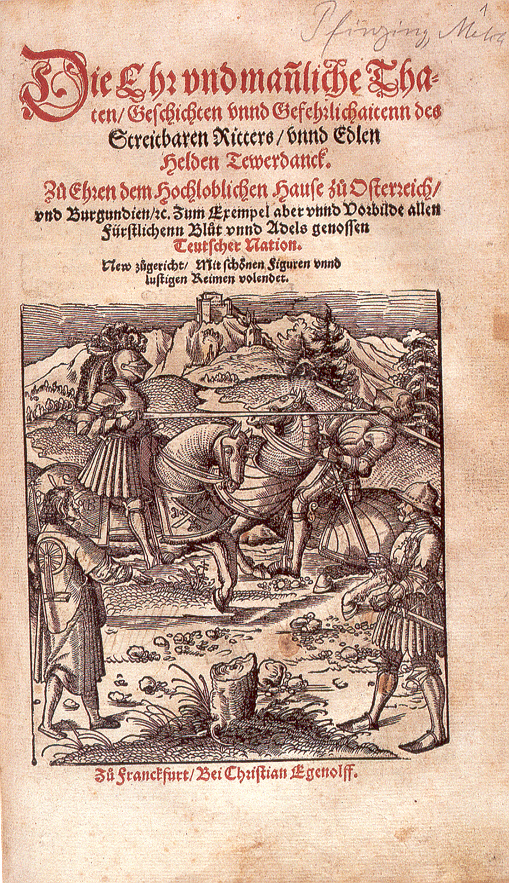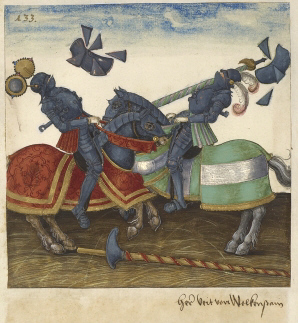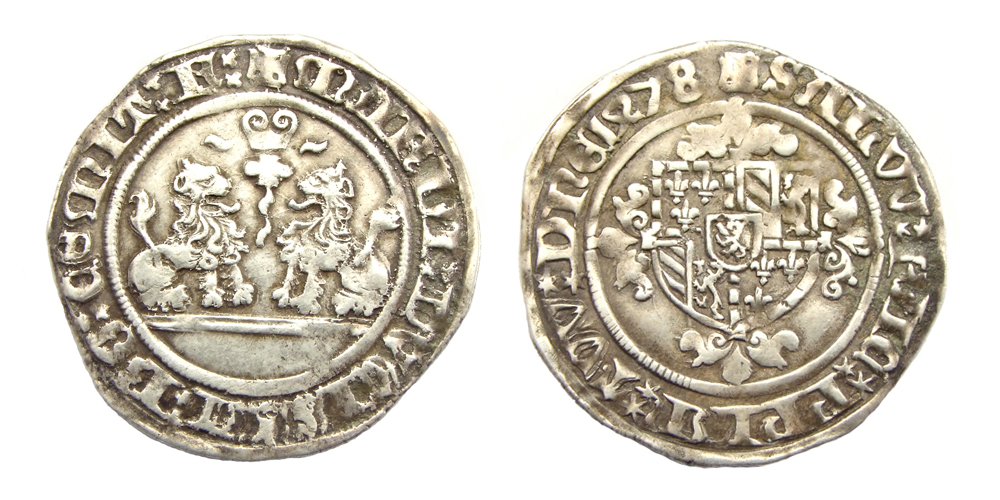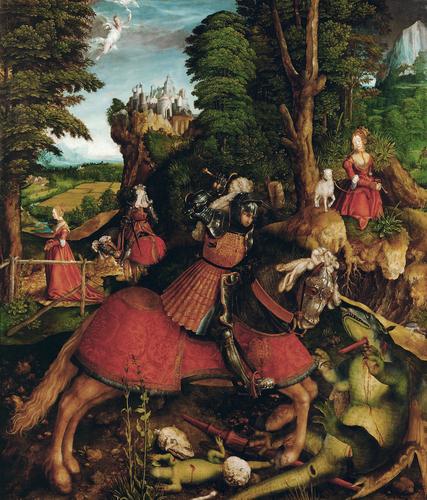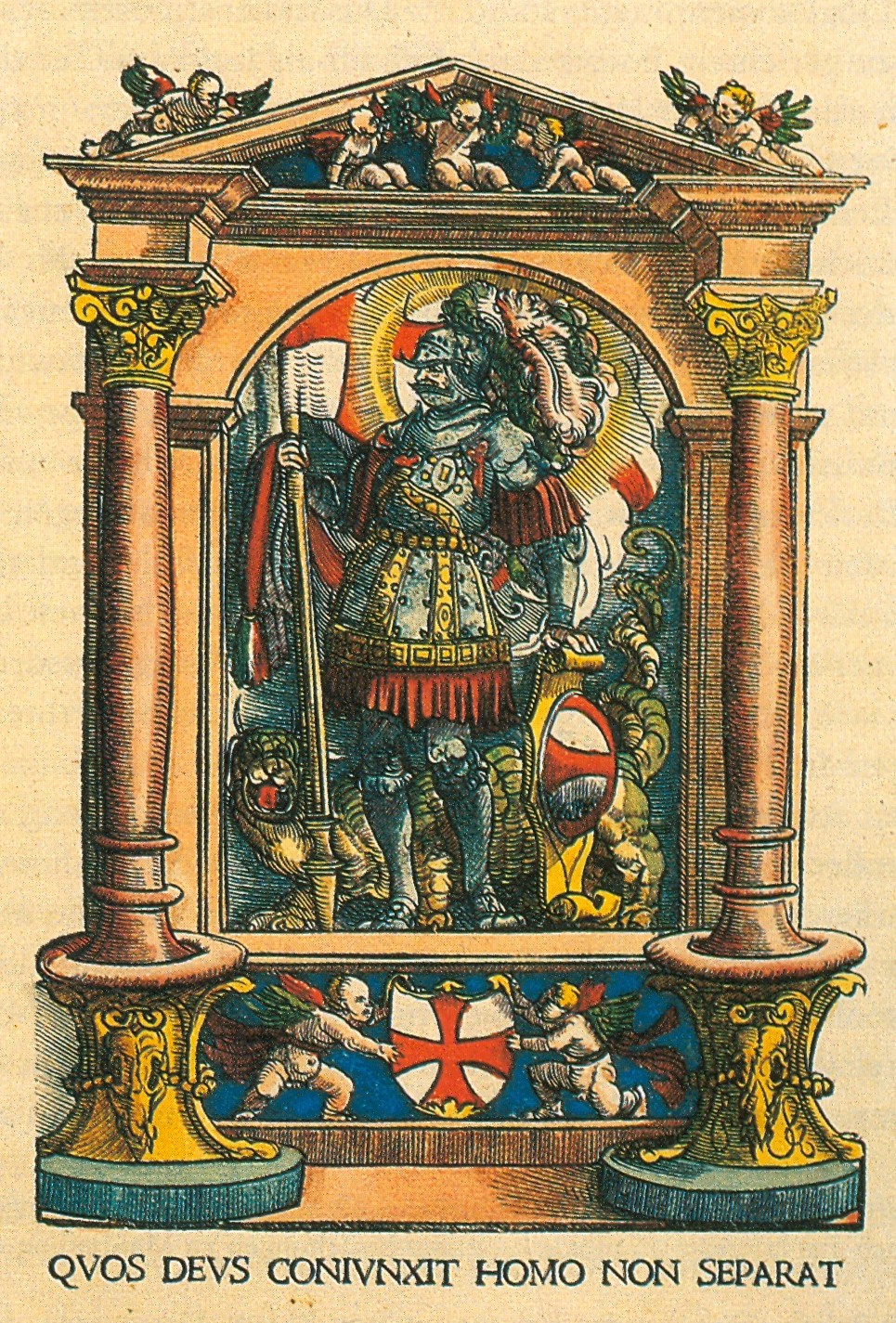|
Theuerdank
''Theuerdank'' (''Teuerdank, Tewerdanck, Teuerdannckh'') is a poetic work the composition of which is attributed to the Holy Roman Emperor, Maximilian I (1486-1519). Written in German, it tells the fictionalised and romanticised story of Maximilian's journey to marry Mary of Burgundy in 1477. The published poem was accompanied by 118 woodcuts designed by the artists Leonhard Beck, Hans Burgkmair, Hans Schäufelein and others.Bartrum, 147 Its newly designed blackletter typeface was influential. The full title in the first (1517) edition is ''Die geverlicheiten vnd einsteils der geschichten des loblichen streytparen vnd hochberümbten helds vnd ritters herr Tewrdannckhs'' ("The adventures and part of the stories of the praiseworthy, valiant and most famous hero and knight, lord Teuerdank"). Background Maximilian I, and his father Frederick III, were part of what was to become a long line of Holy Roman Emperors from the House of Habsburg. Maximilian was elected King of the R ... [...More Info...] [...Related Items...] OR: [Wikipedia] [Google] [Baidu] |
Freydal
''Freydal'' is an uncompleted illustrated prose narrative commissioned by the Holy Roman Emperor Maximilian I in the early 16th century. It was intended to be a romantic allegorical account of Maximilian's own participation in a series of jousting tournaments in the guise of the tale's eponymous hero, Freydal. In the story, Freydal takes part in the tournaments to prove that he is worthy to marry a princess, who is a fictionalised representation of Maximilian's late wife, Mary of Burgundy. The text was never completed, although a manuscript draft is held by the Austrian National Library. Over 200 high quality drawings were created to be used as planning sketches, 203 of which are held in the National Gallery of Art in Washington, D.C., with a small number of others preserved in the British Museum and the Vatican Library. Based on these drawings, 256 miniature paintings were created by court painters, and 255 are preserved in an illuminated manuscript, the ''Freydal'' tournamen ... [...More Info...] [...Related Items...] OR: [Wikipedia] [Google] [Baidu] |
Maximilian I, Holy Roman Emperor
Maximilian I (22 March 1459 – 12 January 1519) was King of the Romans from 1486 and Holy Roman Emperor from 1508 until his death in 1519. He was never crowned by the Pope, as the journey to Rome was blocked by the Venetians. He proclaimed himself elected emperor in 1508 at Trent, with Pope Julius II later recognizing it. This broke the tradition of requiring a papal coronation for the adoption of the Imperial title. Maximilian was the only surviving son of Frederick III, Holy Roman Emperor, and Eleanor of Portugal. From his coronation as King of the Romans in 1486, he ran a double government, or ''Doppelregierung'' with his father until Frederick's death in 1493. Maximilian expanded the influence of the House of Habsburg through war and his marriage in 1477 to Mary, Duchess of Burgundy. However, he also lost his family's lands in Switzerland to the Swiss Confederacy. Through the marriage of his son Philip the Handsome to eventual queen Joanna of Castile in 1496, Maxim ... [...More Info...] [...Related Items...] OR: [Wikipedia] [Google] [Baidu] |
Mary Of Burgundy
Mary of Burgundy (; ; 13 February 1457 – 27 March 1482), nicknamed the Rich, was a member of the House of Valois-Burgundy who ruled the Burgundian lands, comprising the Duchy of Burgundy, Duchy and Free County of Burgundy, County of Burgundy and the Burgundian Netherlands, from 1477 to her death. As the only child of Charles the Bold, Duke of Burgundy, and his wife Isabella of Bourbon, Mary inherited the Burgundian lands at the age of 19 upon the death of her father in the Battle of Nancy on 5 January 1477. In order to counter the appetite of the French king Louis XI for her lands, she married Maximilian I, Holy Roman Emperor, Maximilian of Austria, with whom she had two children. The marriage kept large parts of the Burgundian lands from disintegration, but also changed the dynasty from Valois to Habsburg (the Duchy of Burgundy itself soon became a French possession). This was a turning point in European politics, leading to a French–Habsburg rivalry that would endure for c ... [...More Info...] [...Related Items...] OR: [Wikipedia] [Google] [Baidu] |
Weisskunig
''Der Weisskunig'' or ''The White King'' is a chivalric novel and thinly disguised biography of the Holy Roman Emperor, Maximilian I, (1486–1519) written in German by Maximilian and his secretary between 1505 and 1516. Although not explicitly identified as such in the book, Maximilian appears as the "young" White King, with his father Frederick III represented as the "old" White King. The book is now mainly remembered for the 251 woodcut illustrations, made in Augsburg between 1514 and 1516, the principal artists for which were Hans Burgkmair and Leonhard Beck. The work was never completed, and the full published edition did not appear until 1775. Background Maximilian I, and his father Frederick III, were part of what was to become a long line of Holy Roman Emperors from the House of Habsburg. Maximilian was elected King of the Romans in 1486 and succeeded his father on his death in 1493. During his reign Maximilian commissioned a number of humanist scholars and arti ... [...More Info...] [...Related Items...] OR: [Wikipedia] [Google] [Baidu] |
Fraktur
Fraktur () is a calligraphic hand of the Latin alphabet and any of several blackletter typefaces derived from this hand. It is designed such that the beginnings and ends of the individual strokes that make up each letter will be clearly visible, and often emphasized; in this way it is often contrasted with the curves of the Antiqua (common) typefaces where the letters are designed to flow and strokes connect together in a continuous fashion. The word "Fraktur" derives from Latin ("a break"), built from , passive participle of ("to break"), which is also the root for the English word "fracture". In non-professional contexts, the term "Fraktur" is sometimes misused to refer to ''all'' blackletter typefaces while Fraktur typefaces do fall under that category, not all blackletter typefaces exhibit the Fraktur characteristics described above. Fraktur is often characterized as "the German typeface", as it remained popular in Germany and much of Eastern Europe far longer than el ... [...More Info...] [...Related Items...] OR: [Wikipedia] [Google] [Baidu] |
Leonhard Beck
Leonhard Beck ( – 1542) was a painter and woodcuts designer in Augsburg, Germany. He was the son of Georg Beck, a miniaturist who was active in Augsburg -1512/15. Leonhard collaborated with his father on two psalters for the Augsburg monastery in 1495. He later worked as an assistant to Hans Holbein the Elder, contributing to an altarpiece in 1500-1501 that is now housed in the Städel in Frankfurt am Main Frankfurt am Main () is the most populous city in the States of Germany, German state of Hesse. Its 773,068 inhabitants as of 2022 make it the List of cities in Germany by population, fifth-most populous city in Germany. Located in the forela .... His most notable work emerged during his collaboration with Emperor Maximilian I's artistic team, which produced various self-promotional projects in woodcut. Beck served as the primary designer for the extensively illustrated poem, '' Theuerdank'' (1517), creating 77 of the 118 woodcuts. He made extensive revisions for the ... [...More Info...] [...Related Items...] OR: [Wikipedia] [Google] [Baidu] |
Hans Burgkmair
Hans Burgkmair the Elder (1473–1531) was a German painter and woodcut printmaker. Background Hans Burgkmair was born in Augsburg, the son of painter Thomas Burgkmair. His own son, Hans the Younger, later became a painter as well. From 1488, Burgkmair was a pupil of Martin Schongauer in Colmar. Schongauer died in 1491, before Burgkmair was able to complete the normal period of training. He may have visited Italy at this time, and certainly did so in 1507, which greatly influenced his style. From 1491, he worked in Augsburg, where he became a master and eventually opened his own workshop in 1498. Burgkmair was a Lutheran. Career German art historian Friedrich Wilhelm Hollstein ascribes 834 woodcuts to Burgkmair, the majority of which were intended for book illustrations. Slightly more than a hundred are "single-leaf" prints which were not intended for books. His work shows a talent for striking compositions which blend Italian Renaissance forms with the established German style. ... [...More Info...] [...Related Items...] OR: [Wikipedia] [Google] [Baidu] |
Hans Leonhard Schäufelein
Hans Leonhard Schäufelein (c. 1480–1540) was a German artist, as a painter and designer of woodcuts. Biography He was born in Nuremberg, probably studied under Wohlgemut, and then became the assistant of Dürer, whom he imitated. In 1512 he went to Augsburg and in 1515 removed to Nordlingen. He is a graceful narrator, and his types, though rarely accurately drawn, are attractive, but he lacks power and depth. Characteristic early paintings are the altarpiece at Ober Sankt Veit near Vienna (1502), "Scenes from the Life of Christ" (Dresden Gallery), and " St. Jerome" (Germanisches Nationalmuseum, Nuremberg). To his Nordlingen period belong his masterpiece, the so-called "Ziegler Altar" for St. George's Church (1521), part of which is still in the church, part in the museum; "Scenes from the Story of Judith," in the town hall; and the illuminated Psalter for Count von Ottingen, now in the Berlin print room. His most important woodcuts are those for the '' Theuerdank'' ... [...More Info...] [...Related Items...] OR: [Wikipedia] [Google] [Baidu] |
Library Of Congress
The Library of Congress (LOC) is a research library in Washington, D.C., serving as the library and research service for the United States Congress and the ''de facto'' national library of the United States. It also administers Copyright law of the United States, copyright law through the United States Copyright Office, and it houses the Congressional Research Service. Founded in 1800, the Library of Congress is the oldest Cultural policy of the United States, federal cultural institution in the United States. It is housed in three buildings on Capitol Hill, adjacent to the United States Capitol, along with the National Audio-Visual Conservation Center in Culpeper, Virginia, and additional storage facilities at Fort Meade, Fort George G. Meade and Cabin Branch in Hyattsville, Maryland. The library's functions are overseen by the librarian of Congress, and its buildings are maintained by the architect of the Capitol. The LOC is one of the List of largest libraries, largest libra ... [...More Info...] [...Related Items...] OR: [Wikipedia] [Google] [Baidu] |
Freiburg
Freiburg im Breisgau or simply Freiburg is the List of cities in Baden-Württemberg by population, fourth-largest city of the German state of Baden-Württemberg after Stuttgart, Mannheim and Karlsruhe. Its built-up area has a population of about 355,000 (2021), while the greater Freiburg metropolitan area ("Einzugsgebiet") has about 660,000 (2018). Freiburg is located at the southwestern foothills of the Black Forest, on the Dreisam River, a tributary of the Elz (Rhine), Elz. It is Germany's southwestern- and southernmost city with a population exceeding 100,000. It lies in the Breisgau, one of Germany's warmest regions, in the south of the Upper Rhine Plain. Its city limits reach from the Schauinsland summit () in the Black Forest to east of the French border, while Switzerland is to the south. The city is situated in the major Baden (wine region), wine-growing region of Baden and, together with Offenburg, serves as a tourist entry-point to the scenic Black Forest. According ... [...More Info...] [...Related Items...] OR: [Wikipedia] [Google] [Baidu] |
Duchy Of Burgundy
The Duchy of Burgundy (; ; ) was a medieval and early modern feudal polity in north-western regions of historical Burgundy. It was a duchy, ruled by dukes of Burgundy. The Duchy belonged to the Kingdom of France, and was initially bordering the Kingdom of Burgundy to the east and south, thus being distinct from the neighboring Free County of Burgundy (modern region of Franche-Comté). The first duke of Burgundy (), attested in sources by that title, was Richard the Justiciar in 918. In 1004, prince Henry of France, a son of king Robert II of France, inherited the Duchy, but later ceded it to his younger brother Robert in 1032. Robert became the ancestor of the ducal House of Burgundy, a cadet branch of the royal Capet dynasty, ruling over a territory that roughly conformed to the borders and territories of the modern region of Burgundy (Bourgogne). Upon the extinction of the Burgundian male line with the death of Duke Philip I in 1361, the duchy reverted to King John ... [...More Info...] [...Related Items...] OR: [Wikipedia] [Google] [Baidu] |
